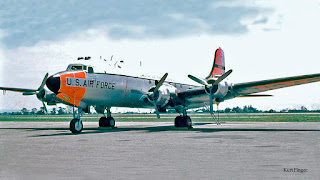A fellow aviation enthusiast who follows my blog put me on to this great blog. Take a look..
Model blog on military aircraft of all periods. Plus general history of aircraft.
Labels
- 127th
- 191st FIG
- 191st FIG History
- 191st FIG.
- a
- A-20 Havoc/Boston
- A-26 Invader
- A-3
- A-4
- A-6 Intrufers
- A-7 Corsair
- A/B-26 Invader
- ADF F-16's 191st Fig
- AIMS Conversions
- airliners
- AM-1 Mauler
- b
- B-17
- B-24 Liberator
- B-25
- B-26 Marauder
- B-47
- B-52
- B-57
- Barry Numerick
- BF-109
- Bf-110
- blogs
- BOH
- Boomerang
- C-118
- C-119
- C-124
- C-130
- C-133
- c-14
- C-47
- C-54
- C/KC-97
- C121/EC 121
- C47/DC3
- Chu Lai RVN
- cold war
- Convair 340/C-131
- curtiss buffalo plant
- DC-8
- decals
- f-100
- F-101 Voodoo
- F-102
- f-104
- F-106
- F-14
- F-15
- F-16
- F-18
- F-20
- F-4 Phantom
- F-4C history
- F-4C Six pack Phantoms
- F-4D
- f-5
- F-8 Crusader
- F-80
- F-84
- f-86
- F-86D
- F-89
- F3H Demon
- F4U Corsair
- FH2 Banshee
- Fury
- FW-190
- FW-190 all variants
- Gunze products
- Hawker Hurricane
- helicopter Vietnam
- i
- in memory of fellow modelers
- Ipms
- IPMS Cons & Nationals
- Japanese aircraft
- JU-87
- JU-88
- KC-135
- KC97-C97
- Keith Ferris Camo Schemes
- KI-61/100
- KMC correction sets
- Korean War
- m
- Meteor fighter.
- MIANG 107th TFS (127th TFG) A-7D
- MIANG aircraft
- MIANG F89C
- Michigan Cold War Nike site
- Mig-`15
- Mig-17
- Mig-19
- modeling memories
- modeling tips
- Mosquito
- my models
- Omaha 2022
- P-2 Neptune
- P-3 Orion
- P-38
- P-39
- P-40
- p-47
- P-51
- Photographing your Models
- Privateer
- RF-84F
- Sea Fury/ Tempest
- SixPack F-106
- spitfire
- t
- T-33
- TBF & TBM torpedo Bomber
- TBM
- Typhoon
- USAF Aces
- Vietnam
- VP93
- War Eagle
- wet decals
- Why didn't my model win?
- WW2 history
- Zero
Tuesday, September 8, 2020
C-54 from the 50's and 60's
I would call the 50's and 6'd the heydays of the USAF. The aircraft had colorful markings. THe C-54 cruised the world delivering cargo all over the world. To the arctic, Greenland, Europe, South American, Anti Arctic and all over Asia.
Tuesday, September 1, 2020
Sunday, August 30, 2020
Mike Ashley's modeling tips
Now talk about a breathe of fresh air.. No ego, just straight modeling tips. Mike has published modeling guides and now a video series. The series is not bad. But you decide for your self. Here is video number one.
Wednesday, August 26, 2020
IPMS Canada "Buzz Beurling Scale Modelers.
Found this great Canadian Modeling site. IPMS "Buzz: Beurling Scale Modelers". The site is a wealth of model tips and information on the RCAF,
Take a look here: The Buzz Beurling Scale Modelers
About IPMS "Buzz" Beurling
We are one of several model clubs in and around Toronto, and one of two IPMS/Canada chapters (strangely enough, the other one is called "IPMS Toronto"). [For those of you from south of the border, or who are just interested, here is a link to the IPMS/USA web page.]
After some thought during the initial meeting, back in 1976, and since the name "IPMS Toronto" was already taken, it was decided to name the chapter after "Buzz" Beurling, a Canadian fighter pilot and ace, during the Second World War.
After a hiatus from the IPMS Canada fold for a number of years, the club has, again, rejoined IPMS Canada as a chapter.
Although a elatively small group, the chapter does keep busy with appearances at annual displays, and helping to sponser model competitions. Membership isn't confined to the Toronto-area. Several members come from well outside the Toronto boundries.
Our monthly meetings are held on the 3rd Sunday. Dave Brown, of Hornet Hobbies, has been kind enough to offer us room to meet in his store, where we can hold i the meetings - having meetings IN a hobby store is great, but can provide temptation to devate from one's current project...
``Buzz'' meetings are about as informal as you will find. We typically bring along something to build (or make Dave happy by picking up something from the store shelves), or just plain chat about models.
At some point, during the day, we manage to cover any chapter matters (like how's the weather, and what shade of plastic tastes best...), but most importantly, just enjoy each other's company, while doing a little modeling.
If you're in the area, we invite you to drop in and see what we're about!
For more information on the club, including annual dues, joining, and where to meet, you can email :
Chosing the correct wingpattern for a Bf109G-6 by "The Profile paintshop"
The article belt is from the "The profile Paint shop" The Profile Paint shop"
Chosing the correct wingpattern for a Bf109G-6
WNF aircraft are closest to the official specs for the camouflage pattern. The demarcation line on the spine is more straight, with an even, often soft, mottle. Most noticeable on WNF aircraft is the pattern on the spine with the 74 further back leaving the canopy in 75. The wingpattern is sometimes very angular and sometimes a little softer. Notice both ailerons in 75, breaking the pattern.




















